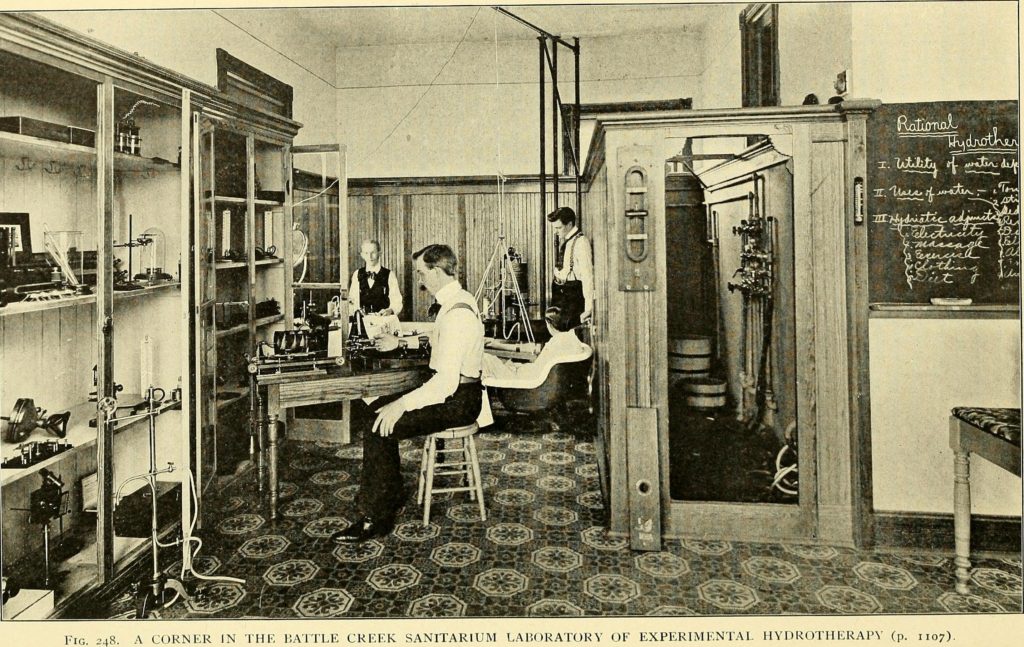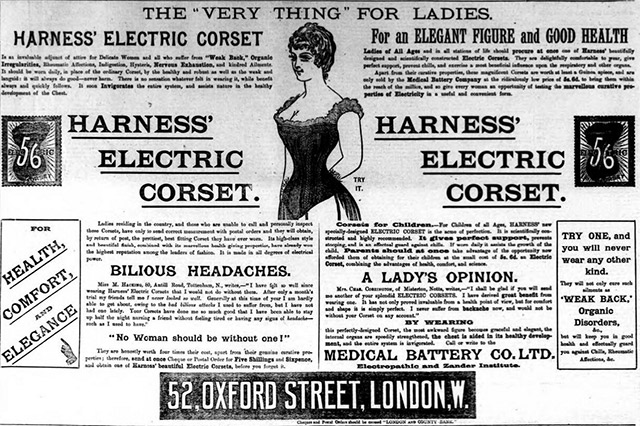Medical beliefs in masturbation during past centuries
Psychiatrist Thomas Szasz, who called masturbation “the primary sexual activity of mankind“, once observed that “in the 19th century it was a disease; in the 20th, it’s a cure.” A fascinating study in Australia, reported in mid-2003, seems to indicate that it can also prevent prostate cancer. So lets look at it through the ages:
1st to 17th centuries masturbation opinions:
- 1st century CE: The Romans began to use the words “masturbor” and “masturbator.” The origins of these words is unknown.
- 4th century CE: A passage in the Jewish Talmud notes: “every hand that ‘checks’ [the genitals] frequently — if by a woman, it is praiseworthy, but if by a man it should be cut off.
- 13th century CE: Christian philosopher Albertus Magnus recommended that pubescent girls rub their clitorises in order to reduce temptation to engage in intercourse, and thus preserve their chastity.
- 17th century CE: An early English dictionary defines “mastuprate” as “dishonestly to touch one’s privates.”
18th century masturbation opinions:
Circa 1712 CE, Dutch theologian Dr. Balthazar Bekker published a monograph titled: “Onania, or the Heinous Sin of self-Pollution, And All Its Frightful Consequences, In Both Sexes, Considered: With Spiritual and Physical Advice To Those Who Have Already Injured Themselves By This Abominable Practice.” He said that masturbation leads to “Disturbances of the stomach and digestion, loss of appetite or ravenous hunger, vomiting, nausea, weakening of the organs of breathing, coughing, hoarseness, paralysis, weakening of the organ of generation to the point of impotence, lack of libido, back pain, disorders of the eye and ear, total diminution of bodily powers, paleness, thinness, pimples on the face, decline of intellectual powers, loss of memory, attacks of rage, madness, idiocy, epilepsy, fever and finally suicide.”

Jean Jacques Rousseau (1712-1778) wrote about several incidents in his book “Confessions, ” which was published in the 1780s after his death. He viewed the “vice” of masturbation when coupled with sexual fantasies as a form of mental rape. He said that it “has a particular attraction for lively imaginations. It allows them to dispose, so to speak, of the whole female sex at their will, and to make any beauty who tempts them serve their pleasure without the need of first obtaining her consent.” He warned his readers that: “Once a young person gets the habit, there is no breaking it short of death.”
“…an English quack published a pamphlet denouncing “Onania” in 1715; Swiss physician Samuel-August Tissot followed suit in 1760 with L’Onanisme. Their preoccupation snowballed until the mid-1870s, when a handful of doctors questioned the prevailing view that masturbation was a sin akin to suicide and a drawn-out method of [the] same.“
In the late 18th century, a Swiss physician named Tissot believed that alterations of blood flow during any sexual activity can lead to nerve damage, insanity, and blindness. He believed that masturbation was especially hazardous in this respect.
An American physician of that era, Benjamin Rush, also viewed the practice of masturbation as dangerous to mental and physical health. He wrote several widely read articles on the subject.
19th century masturbation opinion:
One writer called masturbation the “shameful vice which decimates youth.” In the 19th century, Kellogg invented cornflakes as one part of a diet that he felt would lessen the sex drive and diminish the practice of masturbation — which he called a “crime doubly abominable.” Dr. Graham invented the Graham Cracker for the same reasons.
According to Thomas Laqueur, a Berkeley history professor and author of “Solitary Sex: A Cultural History Of Masturbation,” there was a huge market for devices and medication to control masturbation by the mid-19th century. These included “erection alarms, penis cases, sleeping mitts, bed cradles to keep the sheets off the genitals and hobbles to keep girls from spreading their legs.” A book published at the time sold more than a half million copies. It described masturbation as “man’s sin of sins, vice of vices [which had caused] incomparably more sexual dilapidation, paralysis and disease as well as demoralization than all the other sexual vices combined.”
A popular home health manual from 1871 described masturbation as:
“…a very degrading and destructive habit…There is probably no vice which is more injurious to both mind and body…it retards the growth, impairs the mental faculties and reduces the victim to a lamentable state. The person afflicted seeks solitude, and does not wish to enjoy the society of his friends; he is troubled with headache, wakefulness and restlessness at night, pain in various parts of the body, indolence, melancholy, loss of memory, weakness in the back and generative organs, variable appetite, cowardice, inability to look a person in the face, lack of confidence in his own abilities…[Eventually] there will be an irritable condition of the system; sudden flushes of heat over the face; the countenance becomes pale and clammy; the eyes have a dull, sheepish look; the hair becomes dry and split at the ends; sometimes there is pain over the region of the heart; shortness of breath; palpitation of the heart; symptoms of dyspepsia show themselves; the sleep is disturbed; there is constipation; cough; irritation of the throat; finally the whole man becomes a wreck, physically, morally and mentally.“
“Some of the consequences of masturbation, are epilepsy, apoplexy, paralysis, premature old age, involuntary discharge of seminal fluid, which generally occurs during sleep, or after urinating, or when evacuating the bowels. Among females, besides these other consequences, we have hysteria, menstrual derangement, catalepsy and strange nervous symptoms.”
This passage totally conflicts with current medical opinion about masturbation. One can only vaguely imagine the stress that this and similar books added to people’s lives in the 19th century.

Other supposed dangers from excessive masturbation were believed to be insanity, nervous disorders, hair growth on the palms, and damaged eyesight. [The latter gave rise to the famous question: “Can I do it just until I need glasses?“] More recent false rumors are that masturbation will cause acne, shorten a bout with the flu, reduce the size of a male’s penis, etc.
Lord Baden-Powell, founder of the Boy Scout movement that if masturbation (which he described as “beastliness“) became “a habit, it quickly destroys both health and spirits; he becomes feeble in body and mind and often ends in a lunatic asylum.”
On another note, in the 19th century, some physicians concluded that hysteria among women was caused by sexual deprivation. As a treatment, they would stimulate a woman to have an orgasm in the doctor’s office. Eventually, “a doctor invented the vibrator so women could ‘treat’ themselves at home.”
20th century masturbation opinion:
Prior to the 20th century, physicians’ conclusions were hopelessly biased due to their personal opinions and prejudices and the lack of objective research. It was only in the 20th century that double-blind studies became common. In this type of investigation, a large number of subjects are usually divided into two groups: one receives a medication or treatment; the other groups receive a placebo medication or no treatment. The researcher who looks for positive outcomes in the subjects is kept unaware of which subjects received the medication or treatment. As much as possible, the subjects themselves are similarly kept unaware of who is part of the test group and who is part of the control group. This design of experiment drastically reduces personal bias on the part of the researchers. Results are generally far more meaningful and reliable.

A widely used textbook “Diseases of Infancy and Childhood” described masturbation in its “Functional and Nervous Disorders” chapter as late as 1940. A watershed was reached in 1966 when William Masters and Virginia Johnson published a ground-breaking study: “Human Sexual Response.” Thomas Laqueur comments that shortly after this date: “the solitary vice of the imagination and of fantasy that had so terrified … had been transformed into a virtue: self-pleasuring was the path to self-knowledge, self-discovery and spiritual well-being.“






